
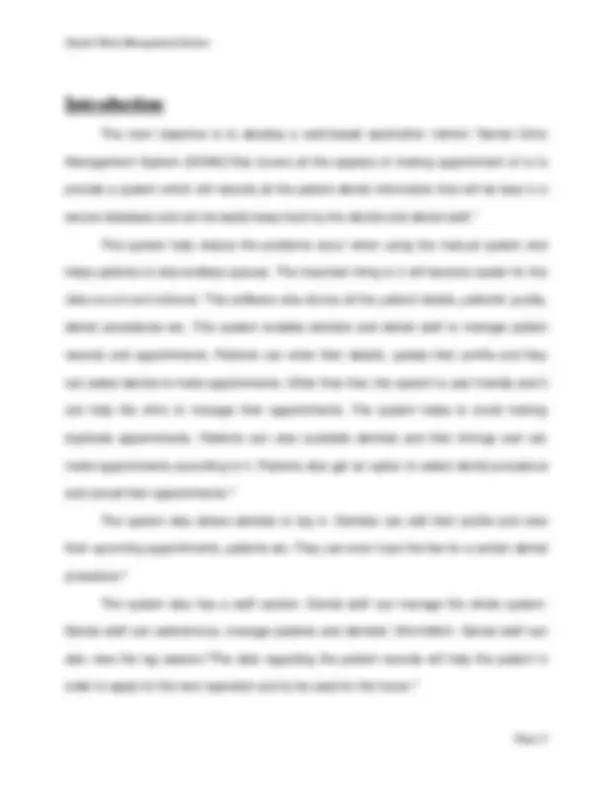
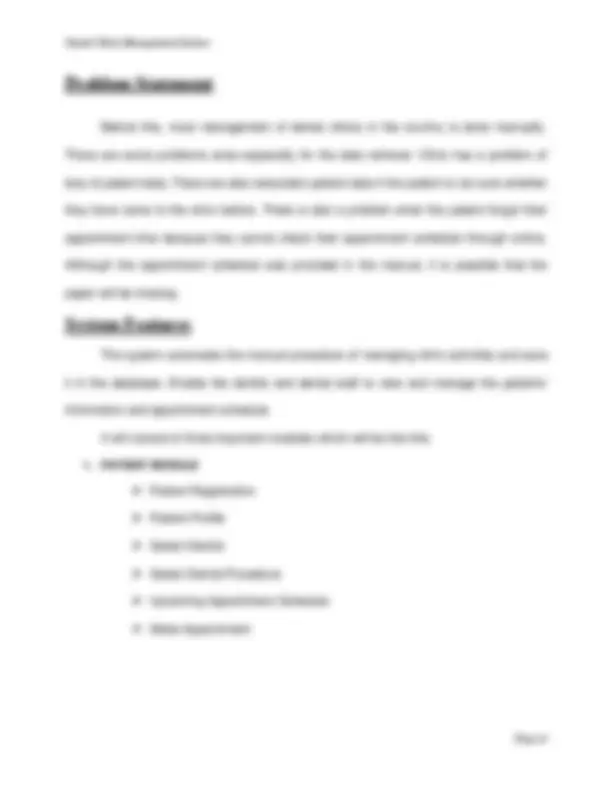
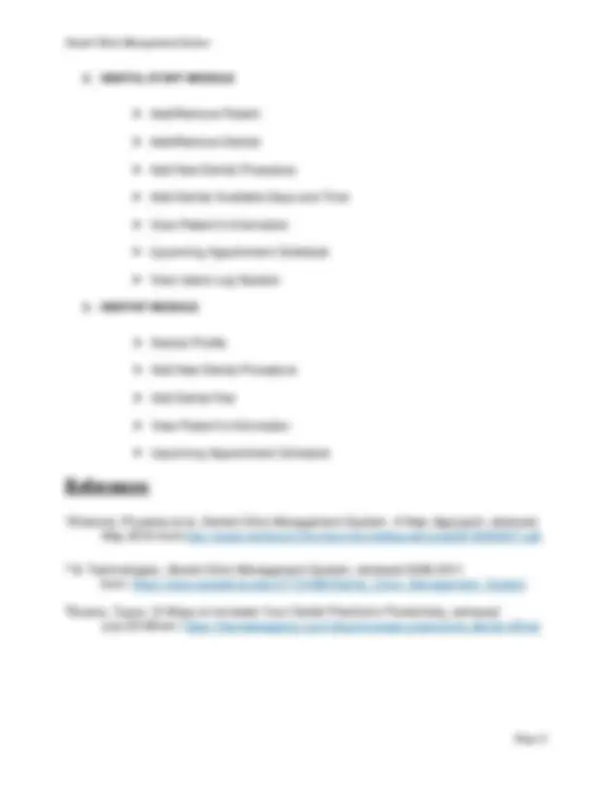
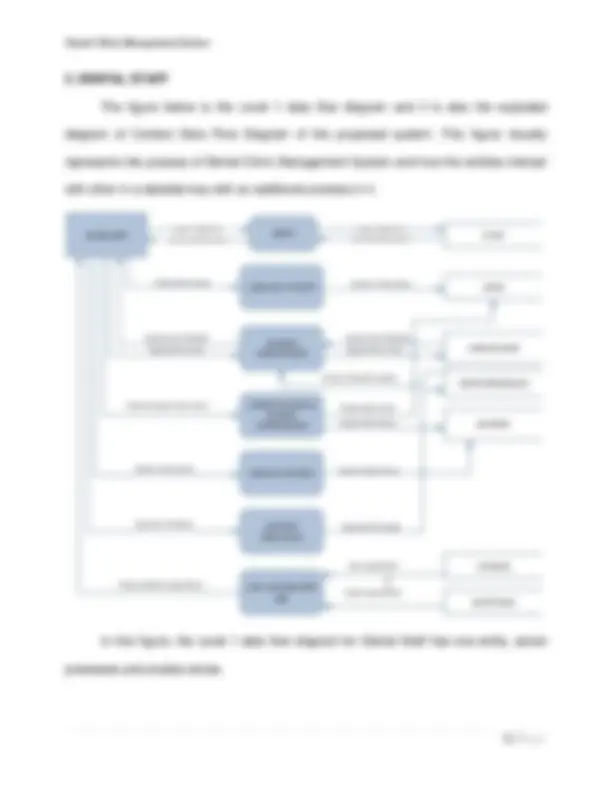

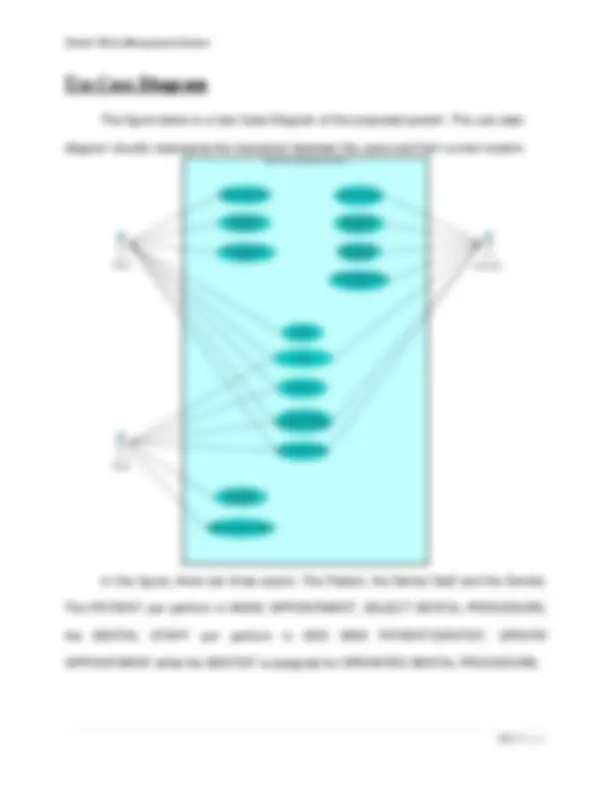
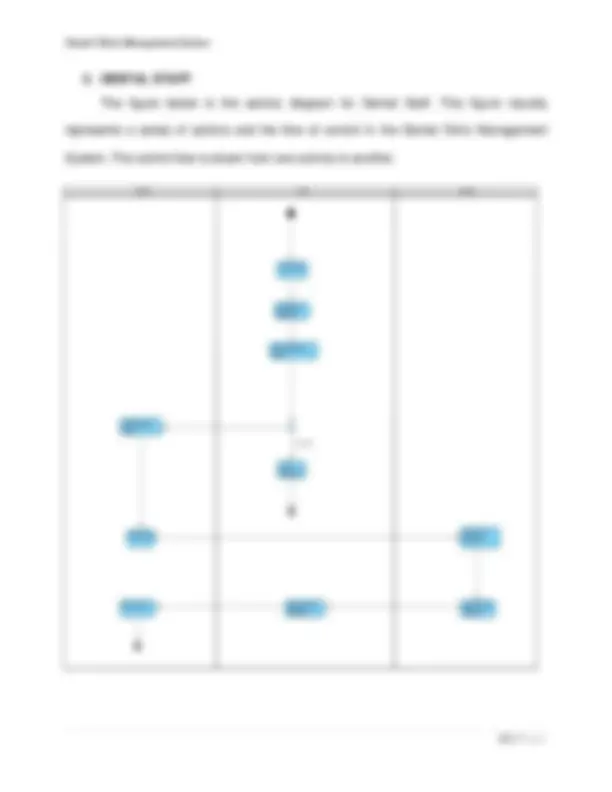
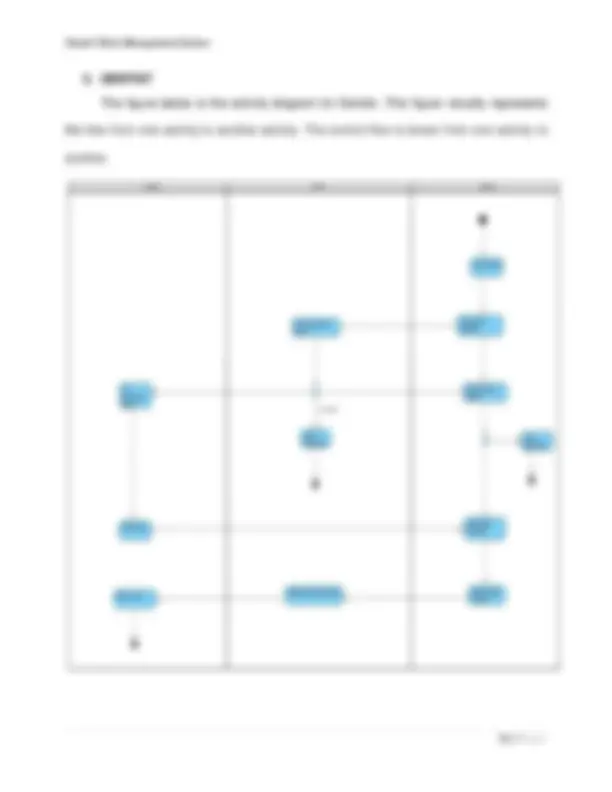
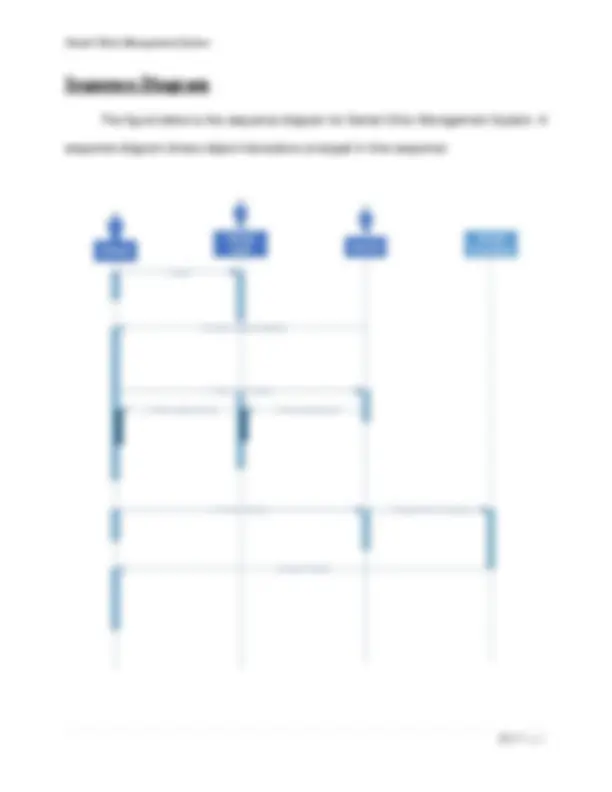
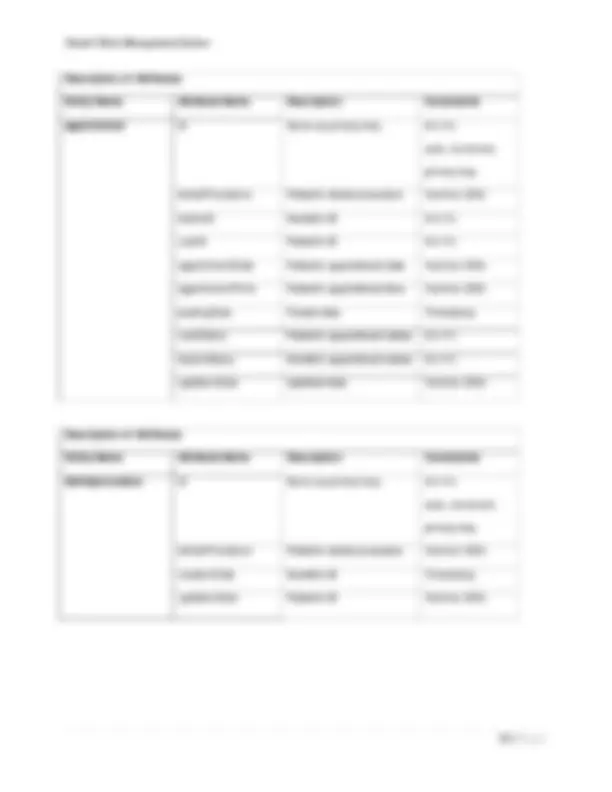
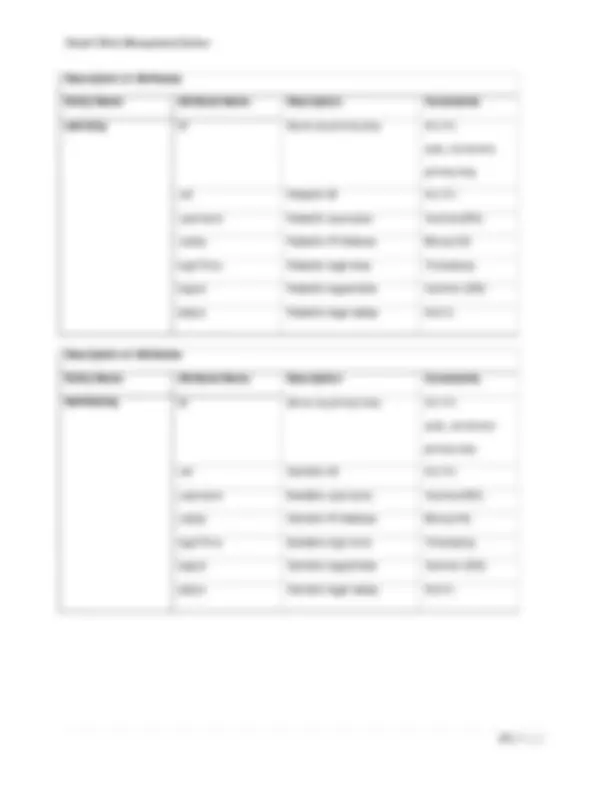


Study with the several resources on Docsity

Earn points by helping other students or get them with a premium plan


Prepare for your exams
Study with the several resources on Docsity

Earn points to download
Earn points by helping other students or get them with a premium plan
Community
Ask the community for help and clear up your study doubts
Discover the best universities in your country according to Docsity users
Free resources
Download our free guides on studying techniques, anxiety management strategies, and thesis advice from Docsity tutors
The dental clinic management system (dcms) is a web-based application that aims to streamline the operations of a dental clinic. The system covers various aspects of dental clinic management, including patient appointment scheduling, patient information management, dental procedure management, and staff/dentist information management. The dcms is designed to address the problems associated with manual clinic management, such as loss of patient data, inefficient appointment scheduling, and difficulty in tracking patient records. The system enables patients to view available dentists, make appointments, and select dental procedures, while the dental staff can manage the entire system, including adding/removing patients and dentists, and viewing user/dentist logs. The data collected by the dcms will help patients in applying for future operations and provide a secure database for the dentist and dental staff to easily access and track patient information.
Typology: Essays (high school)
1 / 19

This page cannot be seen from the preview
Don't miss anything!












Mabini Ext., Cabanatuan City, Nueva Ecija, 3100, Philippines College of Engineering and Computer Technology Department of Computer Technology
Page | 2 Table of Contents Table of Contents .......................................................................................................................... 2
**1. Introduction ............................................................................................................................. 3
DCMS Nov. 08, 2019 Check your problem definition and project scope plus DFD.
DCMS Nov. 11, 2019 Make sure that your diagrams and documentation are more suited for a dental clinic and not a medical clinic.
Page | 4 Problem Statement Before this, most management of dental clinics in the country is done manually. There are some problems arise especially for the data retrieval. Clinic has a problem of loss of patient data. There are also redundant patient data if the patient is not sure whether they have come to the clinic before. There is also a problem when the patient forgot their appointment time because they cannot check their appointment schedule through online. Although the appointment schedule was provided in the manual, it is possible that the paper will be missing. System Features The system automates the manual procedure of managing clinic activities and save it in the database. Enable the dentist and dental staff to view and manage the patients’ information and appointment schedule. It will consist of three important modules which will be like this:
1. PATIENT MODULE Patient Registration Patient Profile Select Dentist Select Dental Procedure Upcoming Appointment Schedule Make Appointment
Page | 5
2. DENTAL STAFF MODULE Add/Remove Patient Add/Remove Dentist Add New Dental Procedure Add Dentist Available Days and Time View Patient’s Information Upcoming Appointment Schedule View Users Log Session 3. DENTIST MODULE Dentist Profile Add New Dental Procedure Add Dental Fee View Patient’s Information Upcoming Appointment Schedule References (^1) Dhanore, Priyanka et al. Dental Clinic Management System- A New Approach, retrieved May 2016 from:http://ijcset.net/docs/Volumes/volume6issue5/ijcset2016060507.pdf (^2) B. Technologies. Dental Clinic Management System, retrieved 2008- 2011 from: https://www.academia.edu/37731980/Dental_Clinic_Management_System (^3) Downs, Tyson. 13 Ways to Increase Your Dental Practice’s Productivity , retrieved July 2018from: https://titanwebagency.com/blog/increase-productivity-dental-office/
Data Flow Diagram (Level 1) The figure below is the Level 1 data flow diagram and it is also the exploded diagram of Context Data Flow Diagram of the proposed system. This figure visually represents the process of Dental Clinic Management System and how the entities interact with other in a detailed way with an additional process in it.
1. PATIENT In this figure, the Level 1data flow diagram for Patient has one entity, two processes and three data stores. The entity is the Patient. Three processes namely, Login and Make Appointment. There are also three data stores namely Users, Appointment and DentalProcedure. Patient LOGIN^ USERS MAKE APPOINTMENT Account Information Account Information Login Credentials Login Credentials APPOINTMENT Dental Procedure Type DENTALPROCEDURE Appointment Schedule Appointment Details Appointment Schedule Appointment Details
The figure below is the Level 1 data flow diagram and it is also the exploded diagram of Context Data Flow Diagram of the proposed system. This figure visually represents the process of Dental Clinic Management System and how the entities interact with other in a detailed way with an additional process in it. In this figure, the Level 1 data flow diagram for Dental Staff has one entity, seven processes and sixdata stores. Dental Staff LOGIN^ STAFF MANAGE APPOINTMENT ADD NEW PATIENT Account Information Account Information Login Credentials Login Credentials APPOINTMENT Patient Information (^) Patient s Information USERS Appointment Schedule DENTALPROCEDURE UPDATE PATIENT & DENTIST INFORMATION VIEW USER/DENTIST LOG ADD NEW PROCEDURE ADD NEW DENTIST DENTISTS Patient & Dentist Information Appointment Schedule Operation Procedure (^) Operation Procedure Dentist s Information (^) Dentist s Information Patient & Dentist Login Details User Login Details DENTISTLOG Appointment Status Appointment Status Patient Information Dentist Information Patient s Dental Procedure USERLOG Dentist Login Deatils
Use Case Diagram The figure below is a Use Case Diagram of the proposed system. The use case diagram visually represents the interaction between the users and their current system. In this figure, there are three actors: The Patient, the Dental Staff and the Dentist. The PATIENT can perform in MAKE APPOINTMENT, SELECT DENTAL PROCEDURE, the DENTAL STAFF can perform in ADD NEW PATIENT/DENTIST, UPDATE APPOINTMENT while the DENTIST is assigned for OPERATES DENTAL PROCEDURE.
Entity Relationship Diagram (ERD) The figure below is the entity relationship diagram of the proposed system and the ways how transactions were made on a Dental Clinic. Based on the diagram, there are seven entities namely, USERS, STAFF, DENTISTS, APPOINTMENT,DENTALPROCEDURE, USERLOG, and DENTISTSLOG. The lines that connect the entities show the relationship of two particular entities.
The figure below is the activity diagram for Dental Staff. This figure visually represents a series of actions and the flow of control in the Dental Clinic Management System. The control flow is drawn from one activity to another.
The figure below is the activity diagram for Dentist. This figure visually represents the flow from one activity to another activity. The control flow is drawn from one activity to another.
Data Dictionary The Table below shows the data dictionary of Dental Clinic Management System. It has three entities namely Patient, Staff and Dentist. Entities are data that represent objects in the real world. The entity Patient is the one who will receive the dental procedure. The entity Dental Staff will manage the patient’s information. The entity Dentist is the one who operates the procedure. Description of Attributes Entity Name Attribute Name Description Constraints users id Serve as primary key Int (11) auto_increment, primary key fullName Patient’s first name Varchar (255) address Patient’s address Longtext gender Patient’s gender Varchar (225) email Patient’s email address Varchar (255) password Patient’s password Varchar (255) contactNumber Patient’s contact number Bigint (11) regDate Patient’s registration date Timestamp updationDate Updated date Varchar (255)
Description of Attributes Entity Name Attribute Name Description Constraints staff id Serve as primary key Int (11) auto_increment, primary key username Staff’s username Varchar (255) fullName Staff’s first name Varchar (255) address Staff’s address Longtext gender Staff’s gender Varchar (225) email Staff’s email address Varchar (255) password Staffs password Varchar (255) contactNumber Staff’s contact number Int (13) regDate Staff’s registration date Timestamp updationDate Updated date Varchar (255) Description of Attributes Entity Name Attribute Name Description Constraints dentists id Serve as primary key Int (11) auto_increment, primary key dentistName Dentist’s full name Varchar (255) availableDaysTime Dentist’s available days and time Varchar (500) contactno Dentist’s contact number Bigint (11) dentistEmail Dentist’s email address Varchar (255) password Dentist’s password Varchar (255) regDate Dentist’s registration date Timestamp updationDate Updated date Varchar (255)
Description of Attributes Entity Name Attribute Name Description Constraints userslog Id Serve as primary key Int (11) auto_increment, primary key uid Patient’s ID Int (11) username Patient’s username Varchar(255) userip Patient’s IP Address Binary(16) loginTime Patient’s login time Timestamp logout Patient’s logout time Varchar (255) status Patient’s login status Int(11) Description of Attributes Entity Name Attribute Name Description Constraints dentistslog (^) Id Serve as primary key Int (11) auto_increment, primary key uid Dentist’s ID Int (11) username Dentist’s username Varchar(255) userip Dentist’s IP Address Binary(16) loginTime Dentist’s login time Timestamp logout Dentist’s logout time Varchar (255) status Dentist’s login status Int(11)